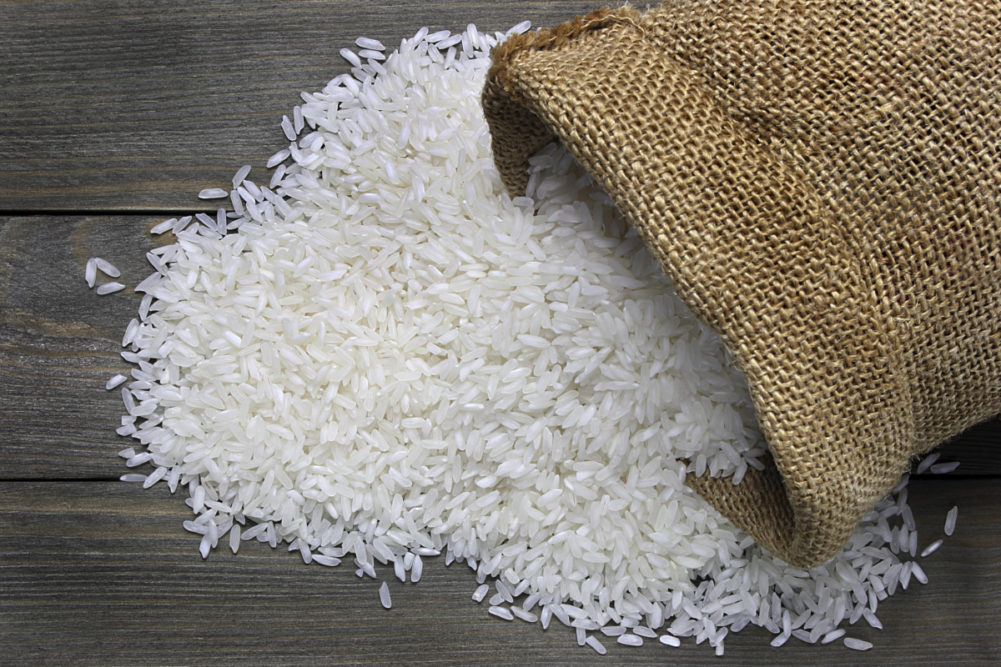Rice price trends have been mixed in recent months, with South American values surging amid tight supplies, while Asian producers have seen declines, with harvesting started or about to start. In the United States, prices were mostly steady, except in California, where an increased harvest triggered a drop in prices.
In its Rice Outlook report, published on Oct. 14, the Economic Research Service (ERS) of the US Department of Agriculture reported that prices for most grades of Thai regularly milled white rice had fallen by 4% to 5% over the preceding month, something the ERS described as “a result of a lack of new sales, a weakening Thai baht, and expectations that the main harvest for nonaromatic rice will begin next month.”
“Thailand’s 100% Grade B long-grain milled rice for export was quoted at $480 per tonne for the week ending Oct. 5, down $20 from the week ending Sept. 7,” the ERS said.
The ERS reported quoted prices for Thai 5% broken parboiled rice at $475 per tonne for the week ended Oct. 5, down $25 from the week ended Sept. 7.
“Prices for Thailand’s jasmine rice — a premium aromatic — were quoted at $848 per tonne for the week ending Oct. 5, down 8% from the week ending Sept. 7, as harvest began this month,” the ERS added.
Price quotes for Vietnam’s rice also have decreased over the past month as new sales have been weak and the 10-month crop harvest has begun, the ERS said. The agency gave prices for Vietnamese 5% broken kernel long-grain milled rice from the autumn crop at $465 per tonne, $10 down from the week ended Sept. 8.
“Price quotes from Uruguay for higher grades of long-grain milled rice were up $85 to $95 per tonne from a month earlier, while quotes from most other South American sources were up more than $100 per tonne,” the ERS said. “The major South American exporters — located in the southern half of the continent — completed their 2019-20 harvest in late May and currently have very small supplies of exportable rice, a major factor in the recent large increase in their prices.”

US trading prices for long-grain milled rice were unchanged over the past month, with supplies of exportable rice still extremely small as supplies from the 2019-20 crop have nearly all been sold and the 2020-21 harvest in the Delta is delayed, the ERS said. That left US long-grain milled rice, No. 2 Grade, 4% broken kernels (free on board a vessel at a Gulf port, Iraq specifications) at $625 per tonne for the week ended Oct. 6, unchanged from the week ended Sept. 8.
“In contrast, milled rice prices in California declined over the past month, partly due to the early harvest of a crop projected to be up 7% from 2019-20,” the ERS said. “Quotes for California No. 1 Grade, 4% broken kernels for the week ending Oct. 6 were quoted at $850 per tonne (free on board at a domestic mill, Mediterranean specifications), down $55 from the week ending Sept. 8.”
The United Nations Food and Agriculture Organization (FAO) said in the October 2020 issue of its FAO Rice Price Update, published Oct. 8, that prices in September were down 1.4% from August, but still up 7.1% on the level of a year earlier. The biggest fall was for glutinous rice, down 4.1% from September, followed by Japonica with a 2.7% decrease.
“Declines in these segments were largely a reflection of low export demand in Vietnam and prospects of somewhat improved Thai fragrant and glutinous production,” the FAO said.
The fall in Indica prices was limited to 1% with trends mixed among major suppliers.
“In Asia, September quotations of Indica rice fell the most in Pakistan and Vietnam,” the FAO said.
In the Americas, Brazilian offers surged even further, as local prices remained persistently high, despite confirmation of an import tariff suspension on non-Mercosur rice, the FAO said.
“Influenced by the bullish Brazilian trends and a revival in buying interest from the country, prices also escalated in Uruguay and Argentina to their highest levels since mid-2014,” the FAO said.






